| Intl. Notebook | Oct 4 2018 |

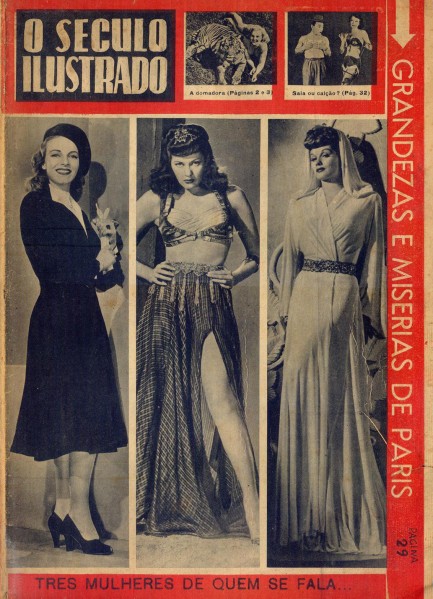
| Vintage Pulp | Jan 23 2016 |

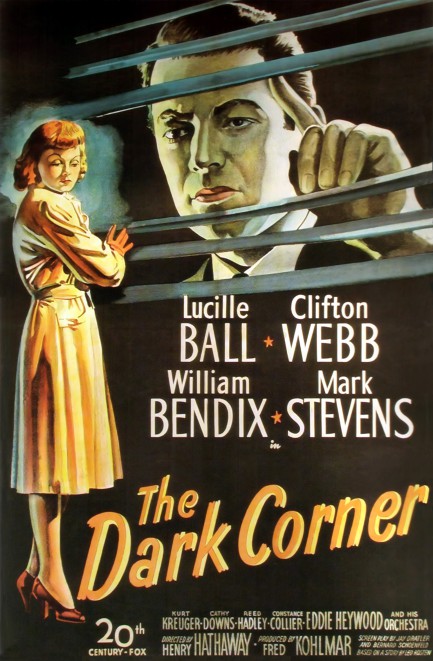
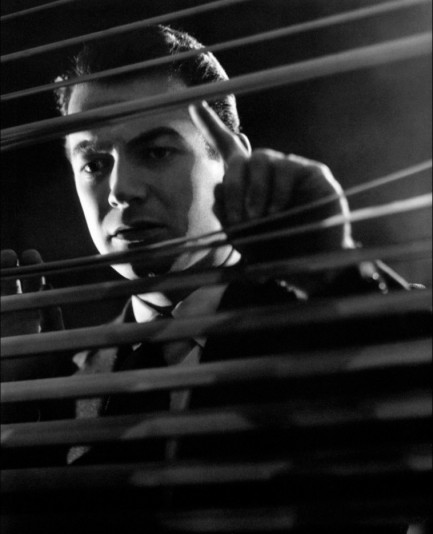 Today the Noir City Film Festival in San Francisco will be screening The Dark Corner, a movie that starts fast and keeps up a breakneck pace throughout, telling the story of small-time detective who is tormented and eventually framed by an unknown enemy. The script, which is credited to five writers, is filled with entertaining jargon, and treats viewers to one of the better quotes from the film noir canon when Mark Stevens references the title with, “I feel all dead inside. I’m backed up in a dark corner and I don’t know who’s hitting me.”
Today the Noir City Film Festival in San Francisco will be screening The Dark Corner, a movie that starts fast and keeps up a breakneck pace throughout, telling the story of small-time detective who is tormented and eventually framed by an unknown enemy. The script, which is credited to five writers, is filled with entertaining jargon, and treats viewers to one of the better quotes from the film noir canon when Mark Stevens references the title with, “I feel all dead inside. I’m backed up in a dark corner and I don’t know who’s hitting me.”
Lucille Ball, top-billed, is pitch perfect as Stevens’ secretary, love interest, and driving force, and William Bendix, who made a career out of tough-and-volatile, nails his role even more solidly than usual here. You also get good work from Clifton Webb and femme fatale Cathy Downs. Atypically violent, and brilliantly wrapped in shadows and cut by black silhouettes by director Henry Hathaway and director of photography Joseph MacDonald, The Dark Corner is what watching film noir is all about. Favorite line: after a character is pushed thirty-one floors to his death a witness on the street gestures at a high window and remarks to a policeman, “Brother, he came out of there like a hot rivet. You know it’s a funny thing, I never yet seen one of those guys bounce.” A must-see.
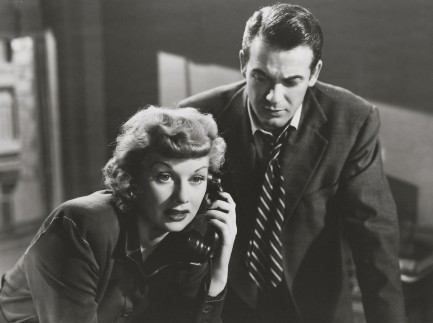
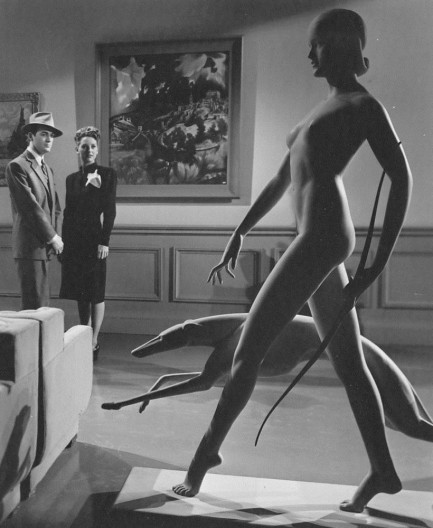
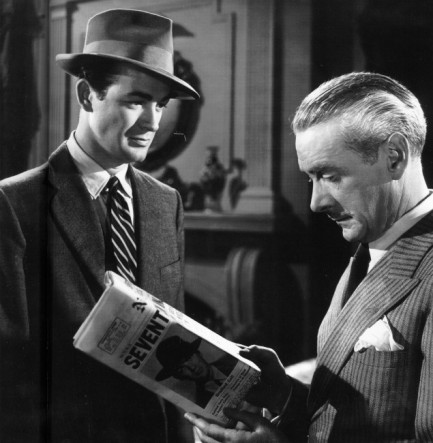
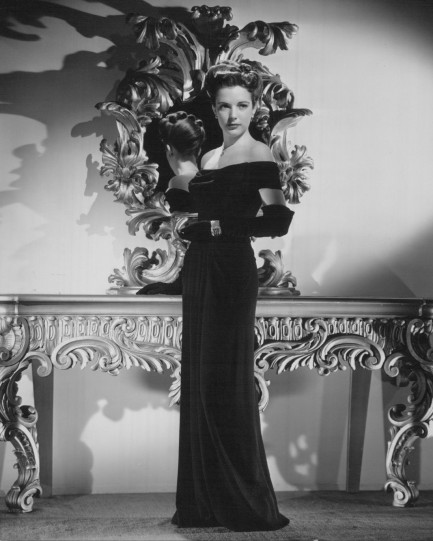
| Femmes Fatales | Dec 31 2013 |


We read an old book recently and the word “ball” was actually in there as a sexual verb. So Lucille Ball, who you see at right, probably had to deal with some pretty crass jokes in her day. But in this 1934 shot in which she’s sharing a cheers with Billie Seward she hasn’t a care in the world. And why would she? Each New Year—then and now—brings new hopes. Champagne wishes, everyone.
| Hollywoodland | Jun 19 2013 |

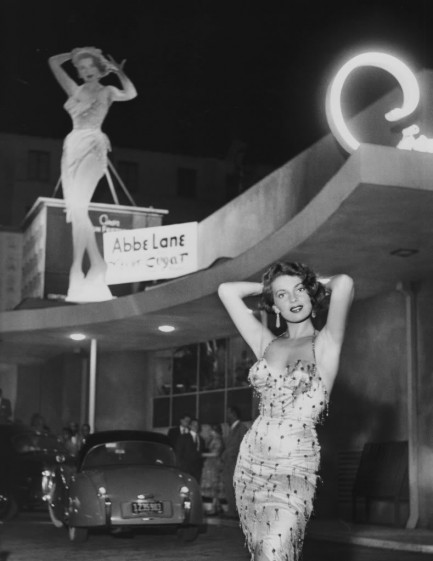
This photo made today in 1954 shows American singer/actress Abbe Lane posing outside Ciro’s nightclub in West Hollywood, California. Lane had begun in show business as a child actress, but became world famous after she married bandleader Xavier Cugat and began fronting his group as a singer. Although this is a famous photo, one you can find elsewhere on the internet, we thought it was worth posting anyway, not just because of Lane, but because supper clubs like Ciro’s really don’t exist anymore. Ciro’s, which by the way was unrelated to the many famous Ciro’s that existed in Europe during the Jazz Age, from its opening in 1940 to its closing in 1957 was a favorite spot of screen personalities, singers, producers, and writers, a place where the night’s meet-ups and trysts were reported in the next day’s gossip columns. Below you see Lane and Cugat, Charlie Chaplin with Paulette Goddard, Lane onstage fronting Cugat’s rumba band, Cary Grant with Betsy Drake, Lucille Ball with Desi Arnaz, Jr., and others.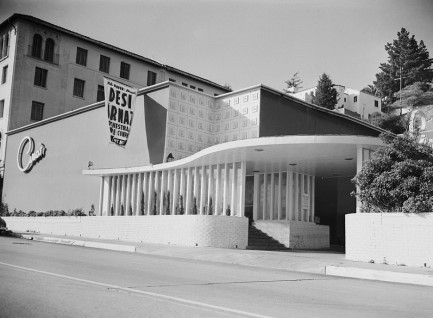
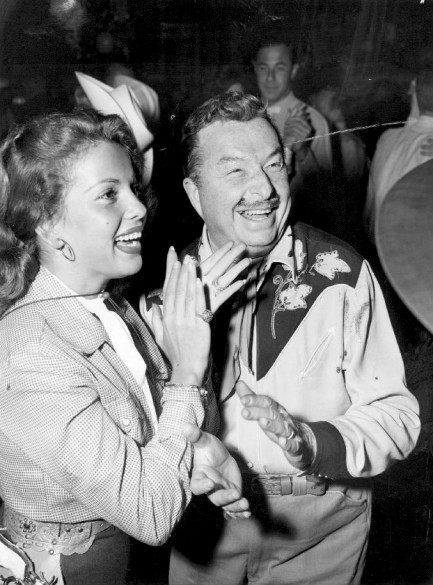
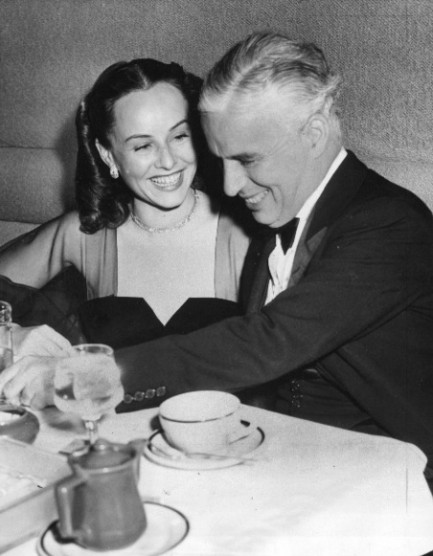
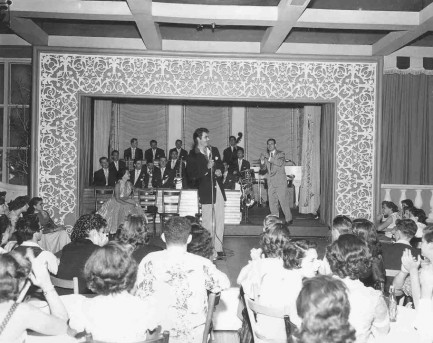
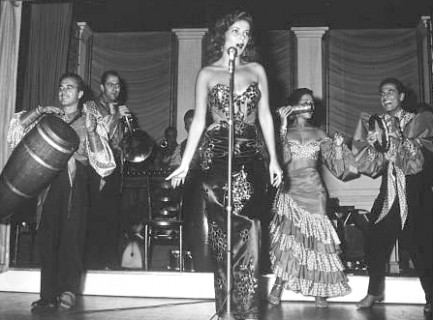
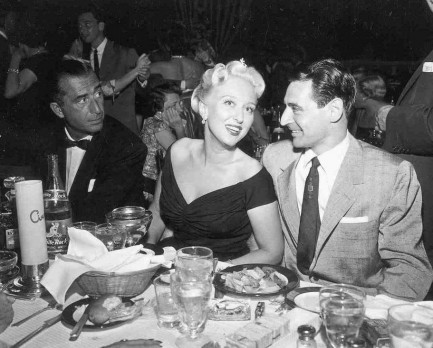
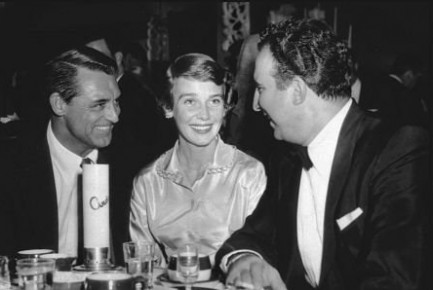
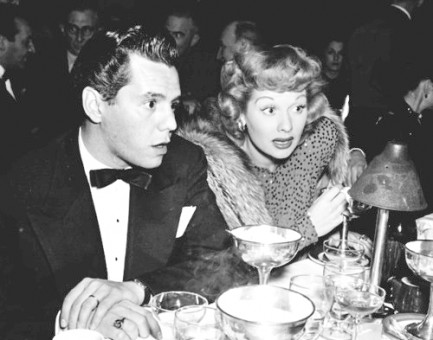
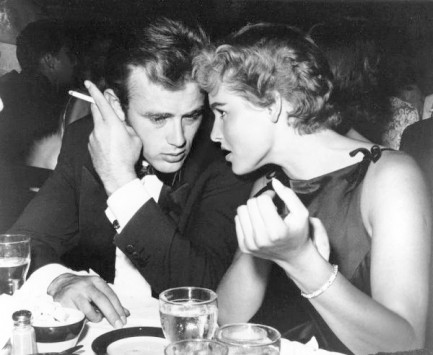
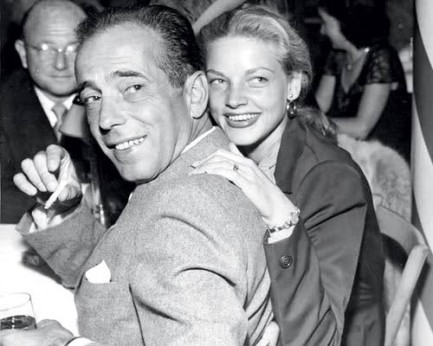
| Hollywoodland | Mar 6 2012 |

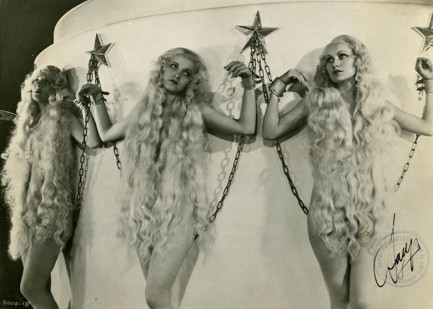
Here’s a rare promo shot from the 1933 pre-Hays Code musical Roman Scandals, an interesting film about a guy from West Rome, Oklahoma who has a vivid dream that he lives in ancient Rome. If you can deal with the sight of Eddie Cantor cavorting in blackface, it’s probably worth a rental. The movie was produced by the Samuel Goldwyn Company, and starred Sam Goldwyn’s dance troupe the Goldwyn Girls, whose most famous ex-member is Lucille Ball. And in fact, that’s Lucille Ball above, on the right, though it may be hard to believe. Trust us, though. The Hays Code, by the way, was actually enacted in 1930 but ignored until 1934, which is why cinema historians consider Roman Scandals to be a pre-Code production. The Code was finally ditched in 1968, but unfortunately in favor of the almost equally arbitrary MPAA rating system. Below, just for the fun of it, we’ve posted the back of the photo because with its writing and tape marks it strikes us as a pretty nice piece of abstract art. And at bottom we’ve posted a much clearer shot of Miss Ball.
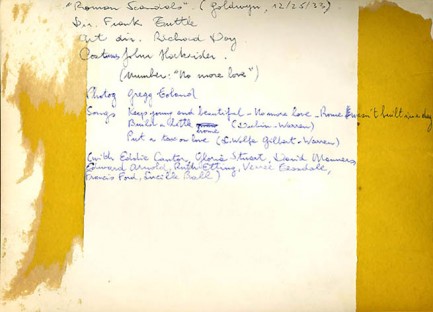
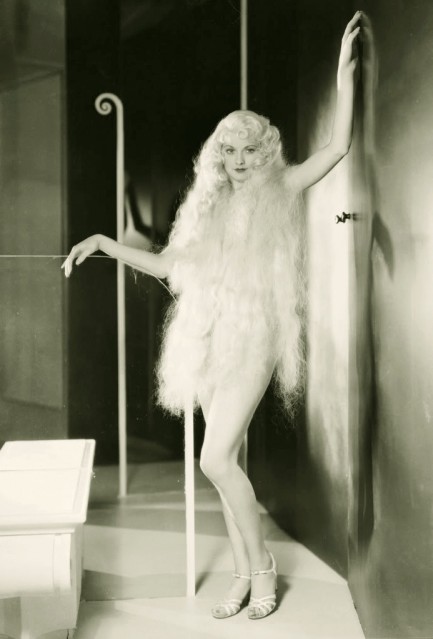
| Vintage Pulp | Aug 3 2011 |

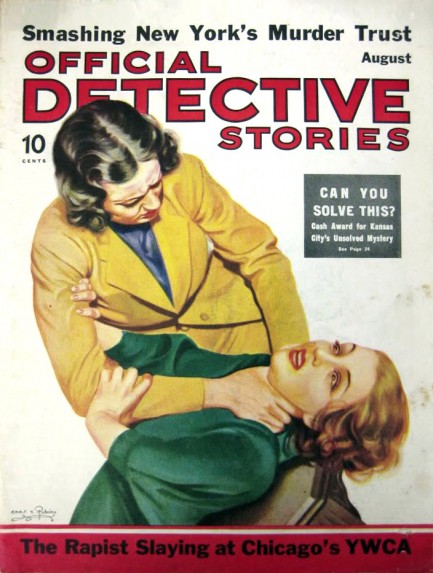
Above, a great cover from Chaz Rubino for Official Detective Stories, August 1936. We’d tell you more about Rubino, but this is the only piece we’ve seen by him, and there’s no info on the internet at all. As for the magazine, Official Detective Stories ran for several decades beginning in the 1930s, and during the 1950s Desilu Productions—i.e. Desi Arnaz and Lucille Ball—even used the magazine as the basis for a television series, but the show didn't catch on and ran for a mere forty episodes. The magazine lasted longer—into the 1990s. Visit our entire true crime magazine collection here.
| Vintage Pulp | May 27 2011 |

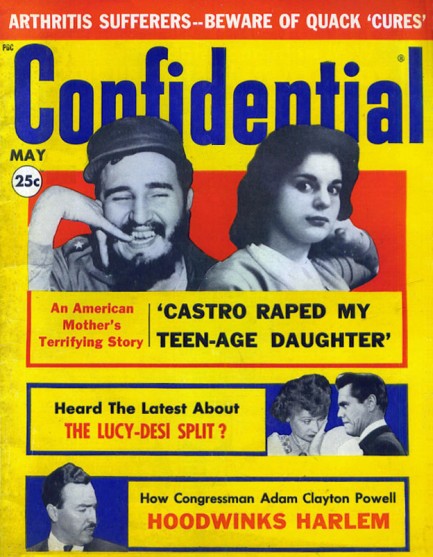
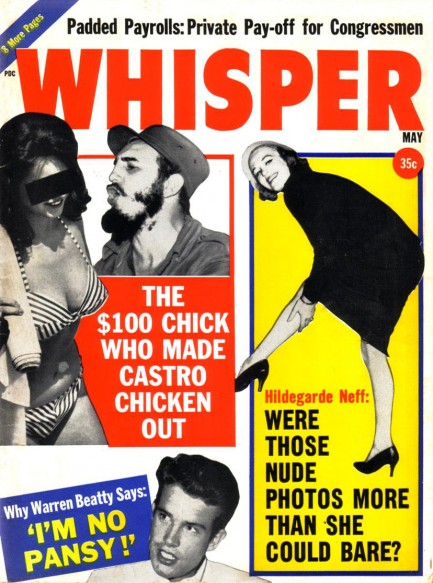
Sexual slander is a time-honored propaganda technique, and today we have two examples, both aimed at Fidel Castro. Confidential, at top, suggests that Castro raped a teenaged girl, while Whisper goes a slightly different route and tells readers he’s afraid of women. Both offer up a version of Castro as less than a man, and during that time of communist hysteria it would have been quite pleasing for people to believe. The really clever element of fabrications like these is that if anyone had called bullshit on the writers it would have been seen as a de facto defense of Castro politically, and thus called into question their patriotism. We would suggest that the same dynamic holds true today.
But just how influential were these magazines? By 1957 Confidential was the biggest selling newsstand publication of any type in the U.S. Its circulation had reached 4 million per issue, but Confidential editors claimed—and there is reason to believe they were right—that every purchased issue of the magazine was actually read by an additional ten people. Confidential’s circulation had declined somewhat by 1960, but it was still a powerhouse, and Whisper wasn’t doing terribly either (though it's circulation too had been declining for a few years). These two issues, from May 1960 and May 1962, span a period when Castromania had reached a fever pitch—at least until the Cuban Missile Crisis came along. We have other tabloid covers with amusing Castro stories here and here, and we’ll compile an aggregate post of others a little later.
| Vintage Pulp | May 26 2011 |

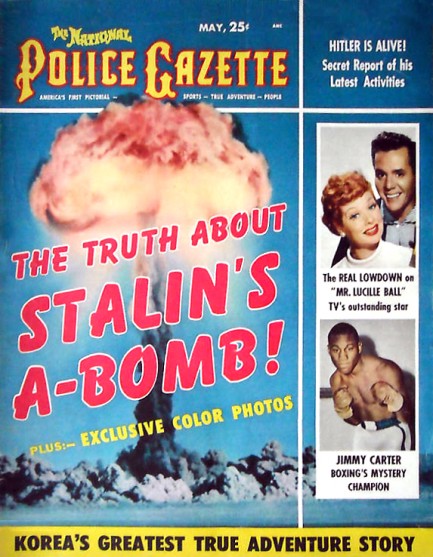
Above is an unusual war-themed cover of The National Police Gazette from May 1953. In addition to stoking up a little Soviet fear with an A-bomb photo illustration, editors play the Hitler card, telling us at upper right that Der Führer is still alive. They made this claim scores of times after the end of World War II, and it never seemed to get old (we documented that phenomenon here). And since the U.S. was embroiled in a proxy war against China in Korea when this issue appeared, that conflict gets a mention too, in the banner at the bottom of the cover. All in all it's three enemies for the price of one—and a small insight into the nuclear fears that shaped the post-war generation. Do you ever wonder what fears shape us that they'll study in the future? We could take a guess, but then we might get real scared, so let's not think about it.




































































